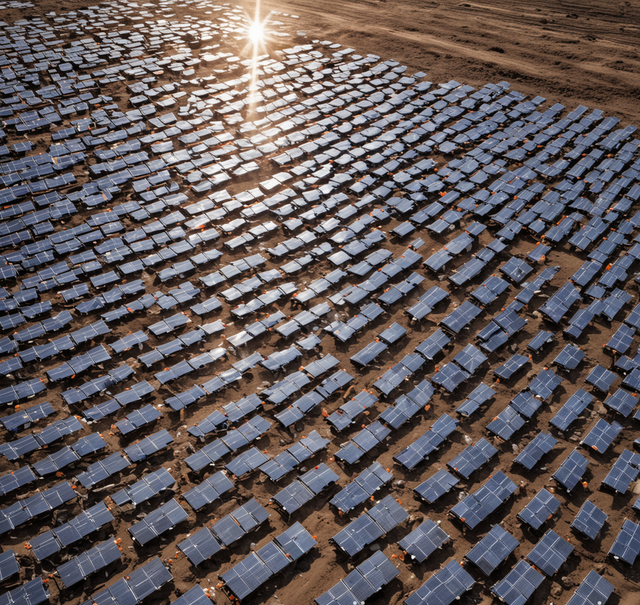Exploring the World of Photovoltaic (PV) Systems

Introduction to Photovoltaic (PV) Systems
Photovoltaic (PV) systems, commonly known as solar power systems, harness the energy from sunlight to generate electricity. These systems consist of solar panels made up of photovoltaic cells, which convert sunlight into direct current (DC) electricity. Through inverters, this DC electricity is then converted into alternating current (AC) electricity suitable for powering homes, businesses, and utilities.
The Basics of PV Technology
PV technology relies on the photovoltaic effect, where certain materials, such as silicon, generate an electric current when exposed to sunlight. Solar cells, the building blocks of PV panels, typically consist of layers of silicon doped with different materials to create an electric field. When photons from sunlight strike these cells, they knock electrons loose, creating an electric current.
Components of a PV System
A typical PV system comprises several components, including solar panels, inverters, mounting structures, and wiring. Solar panels, often referred to as modules, are the primary electricity-generating units and come in various types such as monocrystalline, polycrystalline, and thin-film. Inverters convert the DC electricity produced by solar panels into AC electricity, which can be used to power electrical appliances.
Advantages of PV Systems
PV systems offer numerous advantages over traditional fossil fuel-based energy sources. They produce clean, renewable energy, reducing greenhouse gas emissions and mitigating climate change. Additionally, PV systems require minimal maintenance, have long lifespans, and can operate independently of centralized power grids, providing energy security in remote areas.
Challenges and Limitations
Despite their many benefits, PV systems also face challenges and limitations. Variability in sunlight availability due to weather conditions and diurnal cycles can affect energy generation, necessitating energy storage solutions like batteries. Moreover, the initial investment cost of PV systems can be prohibitive for some consumers, although prices have been steadily declining in recent years.
Technological Evolution of PV Systems
The technology behind PV systems has steadily advanced over the years, enhancing efficiency and performance. Early solar cells were less efficient and costly to produce, but progress in materials science, engineering, and manufacturing techniques has boosted efficiency and lowered costs. New materials like thin-film solar cells and perovskite solar cells show promising potential for future advancements.
Applications of PV Systems
PV systems find application in a variety of settings, from small off-grid setups for homes to large solar parks supplying clean energy to entire cities. Moreover, PV modules are increasingly integrated into building structures such as solar roofs, facades, and windows, blending architecture with sustainable energy generation.
Environmental Impacts of PV Systems
While PV systems are considered environmentally friendly energy sources, they also have some environmental impacts that need consideration. The manufacturing of solar cells and modules requires resources like silicon, aluminum, and glass, with the extraction and processing of these materials potentially causing environmental burdens. Additionally, PV systems may lead to habitat loss for wildlife and changes in microclimates.
Economic Implications of PV Systems
PV systems can offer significant economic benefits, both on an individual and societal level. Individuals and businesses investing in PV systems can achieve long-term cost savings on electricity bills while benefiting from governmental incentives like tax credits and incentive programs. On a societal level, PV systems can contribute to job creation in the solar industry and strengthen local economies.
Regulatory Frameworks and Policy Support
The adoption and proliferation of PV systems are significantly influenced by regulatory frameworks and policy support. Many countries offer financial incentives such as feed-in tariffs, net metering, and tax incentives to promote the installation of PV systems and accelerate the transition to clean energy. Additionally, governmental regulations and building codes play a crucial role in promoting the integration of PV systems into building infrastructure.
Social Impacts of PV Systems
PV systems can also have social impacts by providing access to clean energy for communities in rural and remote areas that may lack access to conventional power grids. These decentralized energy sources can improve quality of life, open up educational opportunities, and create economic prospects.
Research and Development in PV Technology
Research and development in PV technology are ongoing processes aimed at further improving the efficiency, reliability, and cost-effectiveness of PV systems. New approaches such as organic solar cells, nanotechnology, and third-generation solar cells are being extensively researched to enhance the performance and versatility of PV systems.
Conclusion
The future of energy generation undoubtedly lies in clean, renewable technologies like photovoltaic (PV) systems. With continuous technological advancements, increasing policy support, and growing awareness of environmental issues, PV systems are well-positioned to play a central role in the global energy transition. Through further research, innovation, and investment, PV systems can help secure a sustainable energy future for generations to come.